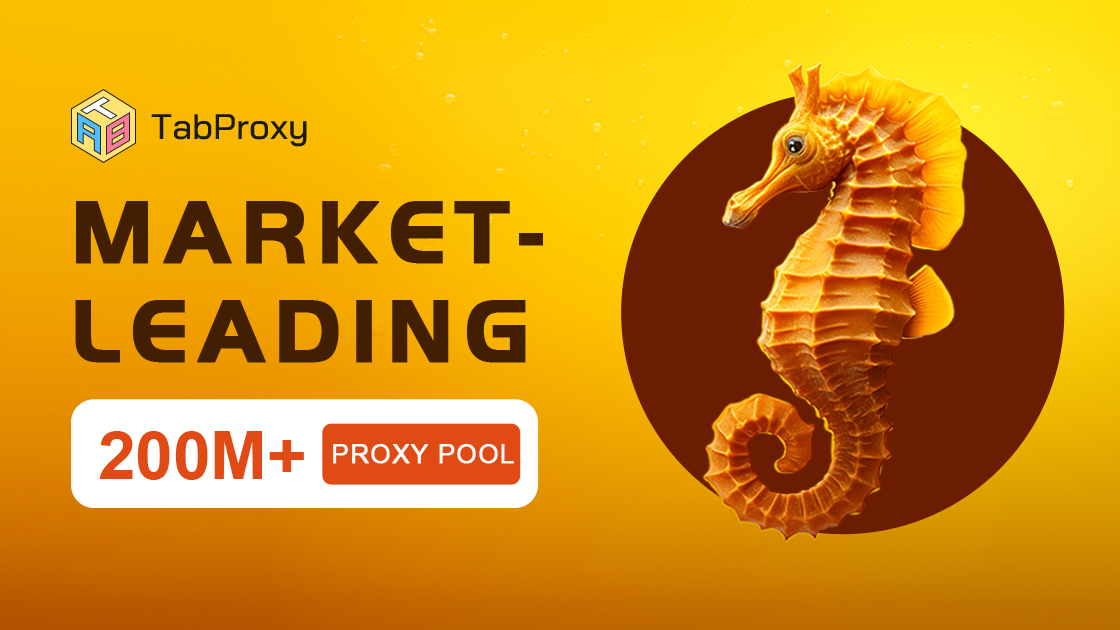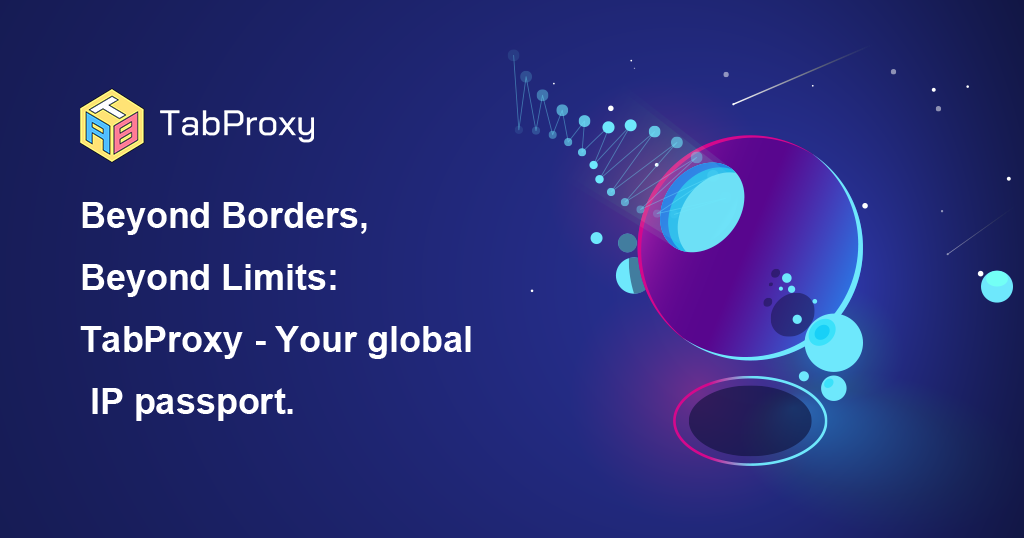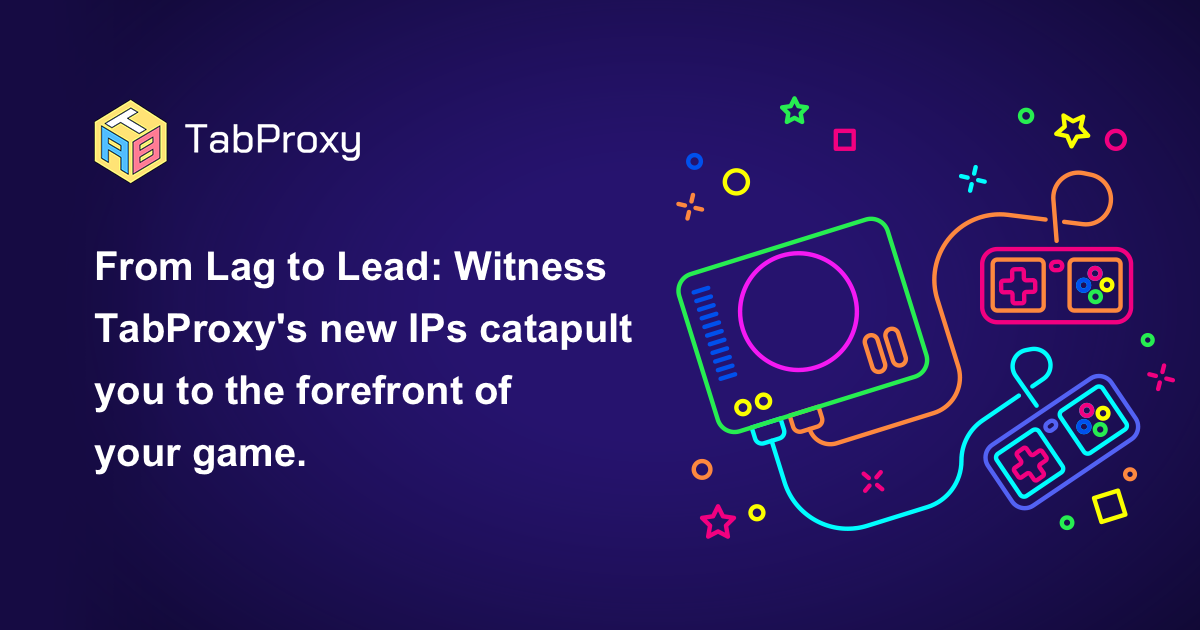TabProxy - How to Do Data Scraping: A Complete Guide
 TabProxy
TabProxy
Data scraping is the process of extracting data from various sources, such as websites, databases, documents, or APIs. Data scraping can be used for various purposes, such as data analysis, web development, market research, SEO, e-commerce, and more. In this article, we will show you how to do data scraping using some popular tools and techniques, and how to use TabProxy, a reliable and fast proxy service, to enhance your data scraping experience.
What is Data Scraping?
Data scraping is a broad term that refers to the extraction of data from various sources, not limited to web-based content. It can include databases, documents, spreadsheets, text files, APIs, and more. It is an umbrella term under which both web scraping and screen scraping fall.
Web scraping specifically focuses on extracting data from websites and web pages. It is primarily used for collecting information from web content, such as text, images, links, and other elements found on websites.
Screen scraping refers to the process of capturing data from the visual display of computer screens. It is typically used with desktop or legacy applications where the data is not easily accessible in a structured digital format.
Data scraping can involve automated techniques for extracting structured or unstructured data from a variety of sources. This process can be used for data integration, migration, analysis, and information retrieval from diverse data repositories.
Why Do Data Scraping?
Data scraping can have many benefits and applications, depending on your needs and goals. Some of the common reasons to do data scraping are:
To collect data for data analysis, data science, machine learning, or artificial intelligence. Data scraping can help you gather large amounts of data from various sources and formats, and transform it into a usable and structured form for further processing and modeling.
To perform web development, web testing, or web automation. Data scraping can help you create dynamic and interactive websites, test the functionality and performance of your web applications, or automate repetitive and tedious web tasks.
To conduct market research, competitive analysis, or business intelligence. Data scraping can help you gather valuable insights and information about your target market, customers, competitors, products, prices, trends, and more.
To optimize your SEO, online marketing, or e-commerce strategies. Data scraping can help you improve your search engine ranking, generate more traffic and leads, monitor and compare prices, track customer reviews and feedback, and more.
To access geo-restricted or blocked content, bypass anti-bot measures, or protect your online privacy and anonymity. Data scraping can help you overcome the challenges and limitations of accessing and extracting data from the web, such as geo-fencing, captcha, IP blocking, and more.
How to Do Data Scraping?
There are many ways to do data scraping, depending on the source, type, and amount of data you want to extract, and the level of complexity and customization you require. Some of the most popular methods and tools for data scraping are:
XPath: XPath is a query language that can be used to locate and select specific elements or attributes from an XML or HTML document. XPath can be used with various programming languages, such as Python, Java, or PHP, to scrape data from web pages. For example, you can use XPath expressions to extract the titles, prices, and ratings of products from an e-commerce website.
Regular Expressions: Regular expressions are patterns that can be used to match or search for specific strings or characters in a text. Regular expressions can be used with various programming languages, such as Python, Java, or PHP, to scrape data from text files, documents, or web pages. For example, you can use regular expressions to extract email addresses, phone numbers, or URLs from a text file.
Beautiful Soup: Beautiful Soup is a Python library that can be used to parse and manipulate HTML and XML documents. Beautiful Soup can be used with various Python modules, such as requests, urllib, or selenium, to scrape data from web pages. For example, you can use Beautiful Soup to extract the headlines, summaries, and links of news articles from a news website.
Scrapy: Scrapy is a Python framework that can be used to create and run web spiders or crawlers that can scrape data from websites. Scrapy can handle various aspects of web scraping, such as requests, responses, selectors, pipelines, items, and more. For example, you can use Scrapy to create a spider that can crawl and scrape multiple pages of a website, and store the scraped data in a JSON or CSV file.
Python Requests Library: Python Requests Library is a Python module that can be used to send HTTP requests to websites and get the HTML content of web pages. Python Requests Library can be used with various Python modules, such as BeautifulSoup, lxml, or pandas, to scrape data from web pages. For example, you can use Python Requests Library to get the HTML content of a web page and use BeautifulSoup to parse and extract the data you want.
Selenium Webdriver: Selenium Webdriver is a tool that can be used to automate web browsers and interact with web pages. Selenium Webdriver can be used with various programming languages, such as Python, Java, or PHP, to scrape data from web pages. For example, you can use Selenium Webdriver to open a web browser, navigate to a web page, fill in forms, click buttons, take screenshots, and extract the data you want.
How to Use TabProxy to Enhance Your Data Scraping Experience?
While data scraping can be a powerful and useful technique, it can also come with some challenges and risks, such as:
Getting blocked or banned by websites that detect and prevent web scraping activities, such as using anti-bot measures, rate-limiting, or IP blacklisting.
Getting inaccurate or incomplete data due to dynamic or interactive web content, such as JavaScript, AJAX, or cookies, that require rendering or executing before scraping.
Getting detected or exposed by websites that track and monitor your web scraping activities, such as using cookies, fingerprints, or headers, that can reveal your identity or location.
To overcome these challenges and risks, you can use TabProxy, a reliable and fast proxy service, that can enhance your data scraping experience. TabProxy offers various types of proxies, such as residential proxies, datacenter proxies, and ISP proxies, that can help you:
Bypass geo-restrictions or blocks by websites that limit or deny access to their content based on your location, such as streaming services, e-commerce platforms, or social media networks. TabProxy has a global network of over 200 million residential IPs from 195 countries, that can help you access any website or content from anywhere in the world.
Bypass anti-bot measures or blocks by websites that detect and prevent web scraping activities, such as using a captcha, rate-limiting, or IP blacklisting. TabProxy has a premium proxy network that grants unparalleled access, shattering geo-fences, bypassing captchas, and dissolving IP blocks. TabProxy also has a rotating proxy feature that can help you change your IP address automatically and frequently, to avoid being detected or blocked.
Protect your online privacy and anonymity by websites that track and monitor your web scraping activities, such as using cookies, fingerprints, or headers, that can reveal your identity or location. TabProxy has real residential IP addresses that provide the ultimate anonymity and security, easily mimicking the behavior of genuine users. TabProxy also has a sticky proxy feature that can help you maintain the same IP address for a longer period, to avoid being exposed or flagged.
TabProxy is easy to use and configure, and it supports various programming languages, such as Python, Java, or PHP, and various web scraping tools, such as XPath, Regular Expressions, Beautiful Soup, Scrapy, Python Requests Library, or Selenium Webdriver.
TabProxy also has flexible pricing options:
Residential Proxies: $0.7/GB - Dominate online.
Datacenter Proxies: $2.5/IP - Perfect for basics.
ISP Proxies: $3/IP - Target regions with precision.
Data scraping is a process of extracting data from various sources, such as websites, databases, documents, or APIs. Data scraping can be used for various purposes, such as data analysis, web development, market research, SEO, e-commerce, and more. There are many ways to do data scraping, depending on the source, type, and amount of data you want to extract, and the level of complexity and customization you require. Some of the popular methods and tools for data scraping are XPath, Regular Expressions, Beautiful Soup, Scrapy, Python Requests Library, and Selenium Webdriver. To enhance your data scraping experience, you can use TabProxy, a reliable and fast proxy service, that can help you bypass geo-restrictions or blocks, bypass anti-bot measures or blocks, and protect your online privacy and anonymity. TabProxy offers various types of proxies, such as residential proxies, datacenter proxies, and ISP proxies, that can help you access and extract data from any website or content from anywhere in the world. TabProxy is easy to use and configure, and it supports various programming languages and web scraping tools.
Subscribe to my newsletter
Read articles from TabProxy directly inside your inbox. Subscribe to the newsletter, and don't miss out.
Written by

TabProxy
TabProxy
Tabproxy's high-quality residential proxies ensure your online privacy & anonymity! With 200M+ real IP addresses. Best proxy service supporting HTTP/S, Socks5 protocols.



